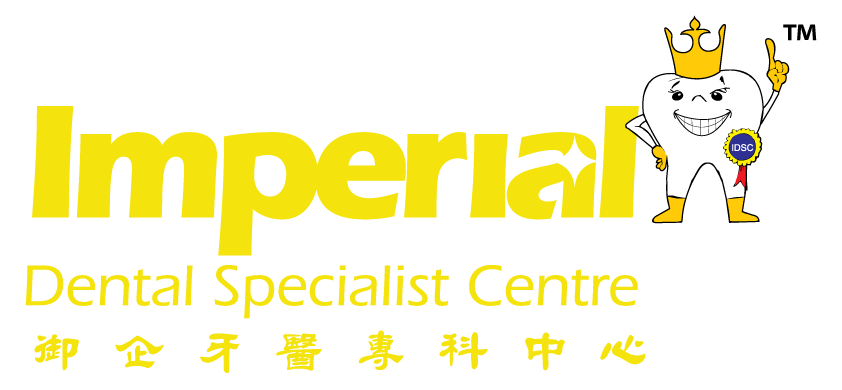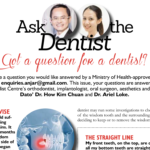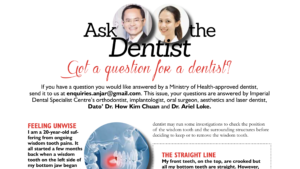Treatment of Mild Class III Malocclusion with Severe Crowding Using
Clear Aligners (Non-Extraction)


by Dato’ Dr. How Kim Chuan and Dr. Salima Mansur Ali
Introduction
Today, orthodontic treatment has become less conspicuous with the emergence of clear aligner systems, hence “invisible orthodontics”. With the aid of CAD/ CAM technology in treatment planning, this case will show:
• How a beautiful smile design can be
achieved using CAD/CAM
• Complete arch development
• How to use the space gained to treat a
non-extraction, crowding case
• Move a buccally displaced tooth with
thin labial alveolar plate without
causing gingival recession
Clinical presentation
The patient is a 13-year-old male who presented to our clinic with a chief complaint of “overcrowded and crooked teeth”. He had a straight profi le with both upper and lower lips slightly ahead of the ‘E’ Line (Fig. 9a & 9b). Prior to treatment, smiling revealed a midline shift (both to the right), asymmetric amount of tooth display, crowding, absence of smile arc, irregular smile line, and inadequate upper incisor display (Fig. 1a).
On frontal view (with teeth in occlusion), intraoral examination revealed severe crowding in both arches. All canines were distally tilted. Tooth #43 was labially erupted resulting in a cross bite and lateral open bite. With thin attached gingiva at the lower anterior region, the labial alveolar plate at the lower incisor and canine regions was also estimated to be very thin. Class I incisors with positive overjet (3mm) and overbite (2mm) was noted. The canines were in Class III relationship (Fig. 2a).
Bilateral bucco-occlusal examination revealed a Class III molar relationship and a reverse Curve of Spee due to over-eruption of the upper posterior segment. Proclined upper incisors and slightly retroclined lower incisors and canines were also noted (Fig. 3a & 4a).


Occlusal view of the upper arch revealed irregularities with crowding and rotation although it was a reasonably well-developed arch (Fig. 5a). The lower arch form was narrow at the premolar region with severe crowding and rotation, retroclined lower incisors, and lingually tilted lower second premolars and fi rst molars (Fig. 6a).
A lateral cephalogram was obtained for Eastman cephalometric analysis (Fig. 9a). This revealed normognathic maxilla and mandible with Class I skeletal relationship, average angle and normal lower anterior face height percentage, normally inclined upper incisors, retroclined lower incisors, the interincisal angle was within normal range (Fig. 10). Although his soft tissue profi le revealed the upper and lower lips to be slightly in front of the ‘E’ line, it was still considered aesthetically pleasing.
The importance of the PA skull x-ray is often overlooked. It’s an important aid to diagnose facial asymmetry. OPG, lateral cephalogram and PA skull x-rays were obtained for better diagnostic value in three dimensions (vertical, transverse and sagittal). The pre-treatment PA skull x-ray revealed skeletal facial asymmetry, with the left side of the mandible being broader than the right (Fig. 8a).

Objectives of treatment
1. Non-extraction Invisalign treatment.
2. Arch development and distalisation to relieve crowding.
3. Extrusion of upper incisors to increase upper incisor exposure and create a nice, aesthetic smile arc.
4. Align the distally tilted and buccally erupted lower right canine to preserve gingival integrity without causing
gingival recession.
5. Redesign smile.
6. Manage the thin labial alveolar plate – when treating a similar case with fixed orthodontics, often times, if heavy forces or wrong biomechanics are used, there is a risk of gingival recession or periodontal damage. In this case, we were able to treat with very light forces and friction-free mechanics, thereby preserving gingival and periodontal health.
7. Intrude the upper posterior teeth to achieve a smooth Curve of Spee.
8. Maintain antero-posterior relationship without proclining the upper anterior teeth.
9. Intrude the lower incisors to reduce the amount of lower incisor display upon smiling within feasible limits while still aiming to maintain positive overbite.
10. Extrude the lower posterior teeth to achieve maximum interdigitation.
11. Tip the dental midlines to the left to coincide with the facial midline.
Polyvinyl siloxane impressions of both arches were made and shipped to Align Technology for scanning. (Alternatively, an iTero scan could be performed to eliminate impression taking.) Marking occlusal contact points using articulating paper prior to taking intraoral occlusal photographs will help the technician to set up the bite correctly. A ClinCheck treatment plan was developed with the above-noted treatment objectives in mind.
Treatment modalities used in the initial
ClinCheck (Fig. 1c/d and 2c to 6c):
a. Distalisation (lower arch) to gain space.
b. Bodily expansion (both arches) to develop and symmetrise arch form, to gain space to alleviate crowding, and to reduce the dark buccal corridor smile.
c. Intrusion (upper posteriors) to achieve a smooth Curve of Spee.
d. Intrusion (lower incisors) to reduce lower incisor display.
e. Extrusion (upper incisors) to increase upper incisor display.
f. Extrusion (lower posteriors) to achieve maximum intercuspation and levelling of the Curve of Spee.
g. Lingual root torque (lower incisors) to correct the retroclined lower incisors and protect the thin labial alveolar plate and gingiva.
h. Crown root control to upright the distally tilted canines.
• Aligner material: SmartTrack
• Other smart force features used in the initial ClinCheck: Optimised rotation attachments on the lower canines and all first premolars.
• Optimised root control attachments (upper canines).
• Multi-tooth extrusion attachments (upper incisors) to increase upper incisor display.
• Horizontal intrusive or extrusive attachments on some of the posterior teeth, which also helped with anchorage
• Smart staging protocol was used in planning tooth movements, whereby force was applied to relieve the crowding only after the creation of sufficient spaces.
• No interproximal reduction was
prescribed in the initial ClinCheck plan.
Discussion
There were 29 aligners used during the initial stage. The patient was advised to wear these everyday for 20 to 22 hrs and change every 14 days.
After completion of the 29 aligners at one year and two months, the crowding and distally tilted canines were almost corrected. However, there was no smile arc and the upper molars were not adequately  intruded; hence, no proper Curve of Spee. The right buccal occlusion could still be improved to achieve maximum intercuspation. Mild occlusal plane canting was noted (right side was at a higher level than the left). Mild midline discrepancy still existed. In order to correct these fl aws and to make some fi nishing improvements, additional aligners were indicated. All attachments were removed, photographs were taken and new PVS impressions were made.
intruded; hence, no proper Curve of Spee. The right buccal occlusion could still be improved to achieve maximum intercuspation. Mild occlusal plane canting was noted (right side was at a higher level than the left). Mild midline discrepancy still existed. In order to correct these fl aws and to make some fi nishing improvements, additional aligners were indicated. All attachments were removed, photographs were taken and new PVS impressions were made.
A new ClinCheck plan was designed and new additional aligners were made. This refinement phase required 21 aligners. Mild IPR of 0.2mm was incorporated in the ClinCheck treatment plan from tooth #s 13 to 23 (distal side).
The patient completed his refinement in 11 months and was satisfied with the treatment. All the attachments were removed and Vivera retainers were fabricated. He completed his treatment without the need to wear any elastics or bond sectional braces or buttons, and this contributed to higher patient satisfaction. All he had to do was change aligners every two weeks and ensure good compliance while wearing the aligners.
The following treatment goals were achieved
(Fig. 1b to 8b, 9c, 9d and 10):
• Class I relationship • Aesthetic smile line
• Anterior crossbite corrected • Improved arch form
• Normal overjet and overbite, with improved overjet • Levelled Curve of Spee
• Coinciding midlines • Proper axial inclination of incisors
1. Correcting inclination and dealing with thin labial alveolar plate. Correcting the distally tilted canines and retroclined lower incisors on a non-extraction basis required extra
caution due to the extremely thin labial alveolar plate and gingiva. Correction was made possible via:
• Arch development to create spaces for alignment.
• Use of extremely light force.
• Selectively not activate the canine before space creation (staging). Due to the severe crowding, extreme caution was necessary to prevent further proclination of the anterior teeth, as this would be detrimental to the periodontium of the anterior teeth and adversely aff ect facial profi le (leading to a procumbent appearance).
2. Centralising midlines. An important consideration in midline discrepancies is to consider the aesthetic impact while ensuring that the dental and facial midlines match. Looking at the patient’s face from frontal dynamic smiling view (Fig. 1a), it was decided to tip the upper midline by 1mm to the left and move the lower midline to the left
as well to coincide with the upper and facial midlines. (The intraoral frontal view (Fig. 2a) alone is rather misleading as it appears that the midlines are shifted opposite to each other).
Conclusion
The patient’s Invisalign treatment plan worked well as it allowed for corrections in the vertical, transverse and anteroposterior dimensions. Using light force and smart
interaction with attachments to deliver forces towards the intended direction, the Smart Force system has proven to be clinically effective. However, careful planning using ClinCheck Pro by Invisalign is absolutely crucial. Invisalign was also eff ective in designing a perfect smile for this patient as the 3D control is much better than fi xed bracket systems, thus leading to better results that were achieved at a shorter duration.







